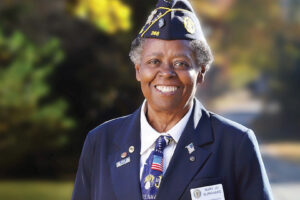Helen Yorke’s life has been defined by her love of running. The Manalapan resident was the state champion in the 1960s in the half-mile and was a high school track coach for years. In fact, when she had a severe heart attack 10 years ago, her doctor said she survived it because of her commitment to cardio. So when she began having trouble keeping proper running form five years ago, she was understandably concerned.
“I was running with my daughter on our regular 2-mile course when she noticed that I was dragging my left foot and my left arm wasn’t moving properly,” explains Helen, 77.
Helen went to a neurologist, who diagnosed her with Parkinson’s disease. Determined not to let the disease rob her of her love of running, she began physical therapy at the OceanFirst Rehabilitation Center at CentraState. She’s taken several exercise classes at the center and recently joined CentraState’s research study to examine the effects of dance in improving functional mobility and quality of life for those with Parkinson’s Disease or Parkinsonism.
The 12-week biweekly class was developed by physical therapist Jen De Los Santos, who specializes in neurophysical therapy, and Amy Trifiro, physical therapist assistant. In addition to warm-up and cool-down components, participants are guided by physical therapists in choreographed dance styles ranging from the tango to country line dancing.
“The mixed-gender program accommodates participants of all abilities in a supportive, compassionate environment,” explains Amy, who leads the more challenging portions of the class while Jen explains the slower, modified movements. Jen develops the clinical goals of the program and Amy, who has taught dance for 18 years, develops the choreography.
The Benefits of Dance
Participants’ abilities are tested the first day of class and progress is assessed at six weeks and at the end of the program. Participants have shown improvements in balance, posture, dance step memory recall, gait, and sleep quality.
“This class isn’t just about improving balance, gait, and mobility; it also improves quality of life,” says Jen.
For Helen, it reminds her of dancing to American Bandstand in high school.
“It’s so much fun,” she says. “It’s helped my balance, coordination, and confidence. Once I realized that I could do it, I’m now willing to take more risks because I know my body will respond.”
Helen is still running, and she rides her bike a mile most days.
“When you have Parkinson’s, it’s important to keep moving,” she says. “Dancing is a fabulous way to improve myself, meet people, and have fun at the same time.”
For more information about rehabilitation services at CentraState, visit centrastate.com/rehab or call 866-CENTRA7 (866-236-8727).
Reviewing the Research
The benefits of dance for people diagnosed with Parkinson’s disease has been well researched and may include improved:
- Balance
- Walking ability
- Motor skills
- Mood
- Cognitive function
- Quality of life
One study found that participants were able to move their limbs, tap their fingers, and change their facial expressions more easily after only one class. It also concluded that dancing improves the quality of participants’ lives and contributes to an increase in overall well-being.
The Symptoms of Parkinson’s Disease
The most common symptoms associated with Parkinson’s disease include:
- Muscle rigidity
- Tremors or shaking
- Changes in walking pattern and posture
- Changes in speech and handwriting
- Loss of balance and increased falls
- Bradykinesia – the slowing down of movement and the gradual loss of spontaneous activity
- Orthostatic hypotension – a drop in blood pressure when standing that causes lightheadedness or fainting





